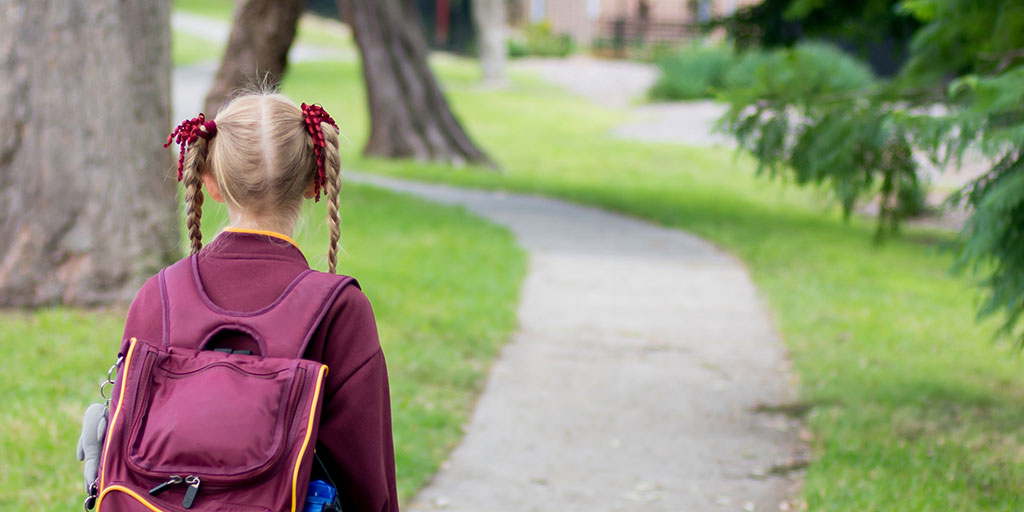When are they ready to take the journey to school on their own and how can we prepare them?
Whether or not a child is ready to make an independent journey to and from school, is a significant step for all parents and guardians. Some are more comfortable with the legal notion – opting for NSPCC advice that under 8s should not be out on their own. Others see relative safety in their neighbourhoods and the proximity to their school, as reason enough for their children to make those journeys much earlier.
Safety is a clear factor in making this decision. More than half of parents cited safety from traffic incidents (47%), and possible assault (29%).
as to why they chose to accompany their children to school. Surveys and census data from the last fifty years have confirmed that journeys to and from school in vehicles have increased whilst walking and cycling have steadily decreased. With safety concerns a major factor in choosing travel options and the average school journey having increased to 1.6 miles how can we ensure parents and guardians can feel more confident about letting their children travel alone to school?
First Step PE gives you our top three indicators of readiness in children:
1. Can your child follow traffic instructions?
Not every child is the same and it’s important to treat your children like the individuals they are. Test them regularly but on an ad hoc basis. On journeys to and from school, parents and teachers should check they understand traffic signals and they know how zebra crossings work. Be aware of lollipop men and women, as people whose instruction they should follow when crossing roads. If they have devices on them, make sure they are aware of how dangerous it is to use them whilst crossing roads.
Whilst children can legally cycle on the pavement until they are 10, the exact legislation determines that they are not criminally liable for riding on the pavement. This means that children need to be comfortable riding on pavements alongside other pedestrians, on main roads, sides streets and sometimes even cycle lanes. Bikeability training with First Steps Cycle can help build their confidence here. Check out the First Step Cycle website for more information on joining classes.
They need to have developed a sensory awareness for people and crossings, stopping at pavement curbs, to look both ways as well as acknowledging other pedestrians. This type of awareness will take time however, preparing them to understand this will help you feel more confident in their skills.
2. Can they handle the journey confidently?
Knowing their way to school is not the only indication that they are ready to undertake a school journey on their own. It’s important that you ensure that children are aware of their local environment, reminding them of local landmarks, well-lit shops, and where lollipop men and women are.
Checking that children understand the length of the journey and the journey that is safest is a matter of practice. It’s possible to start off by letting them walk or cycle part of the way home, or travel to the nearest bus stop or landmark and meeting them there before allowing them to perform the entire journey on their own. It helps solidify the preferred journey in their minds before letting them attempt the whole route independently.
Make sure that your child understands their environment and can pick out landmarks for example. If they are in trouble, they should know to head for well-lit spaces such as shops and avoid dark paths or cutting through parks. On bikes, make sure they are wearing high-visibility gear and have working lights on their bike.
3. Can they and are they following these checks?
There are a series of checks they need to follow before your children leave any space on their own. It’s likely they will get some of these wrong. The point is that they understand and remember to practice doing them.
Checks for Bikes | Checks for Walking |
Before you ride remember to check your ABCs. A – Air in your tyres B – Brakes are working (Back and front) C – Check chain | Always have any wallets, pocket money or passes necessary for the day stored in inside pockets on coats or blazers. |
For cold days, gloves, a short scarf, and a high-vis vest. | For cold days, gloves and a scarf, and boots to keep feet dry. |
Helmet should sit on the head – not too tight or too loose. | Try not to wear restrictive clothes or shoes. |
You might like to have a change of clothes in case of dirt and sunscreen in the summer. | Carry backpacks and bags close to the body with no dangling straps. |
A good breakfast or a snack before school. | Cross streets at zebra crossings only, not in blind spots between cars. |
These are the types of checks that can go up on fridges or be reminders sent home for families. It’s important to include that helping a child learn this type of independence really helps them grow and develop. Children need to feel confident in the lessons they’ve learned in order to thrive independently. The better equipped they are, the more confident you can be.


